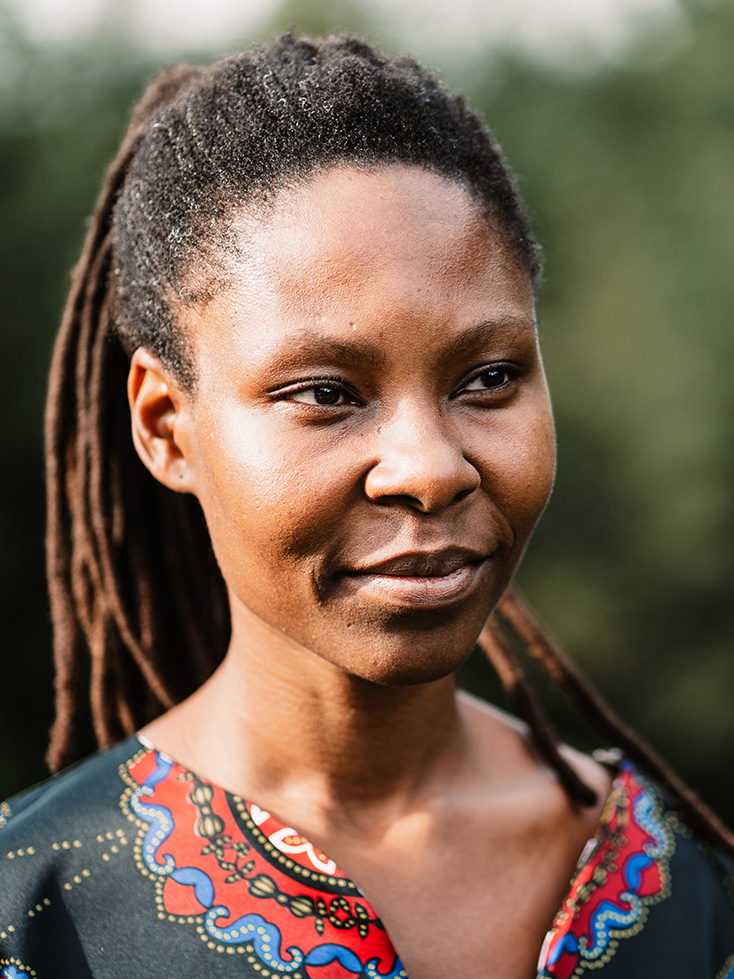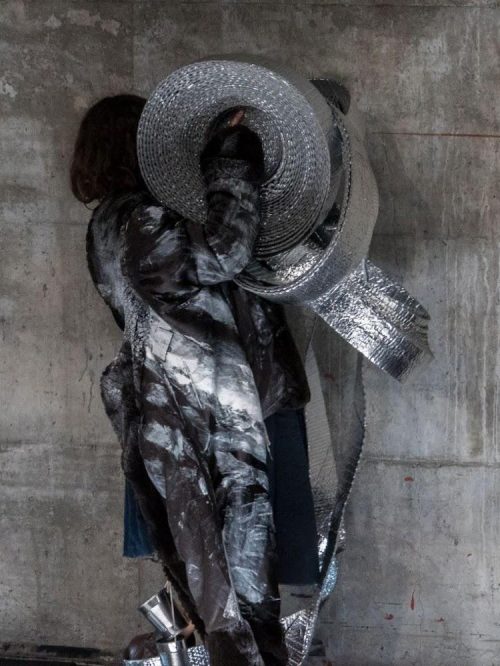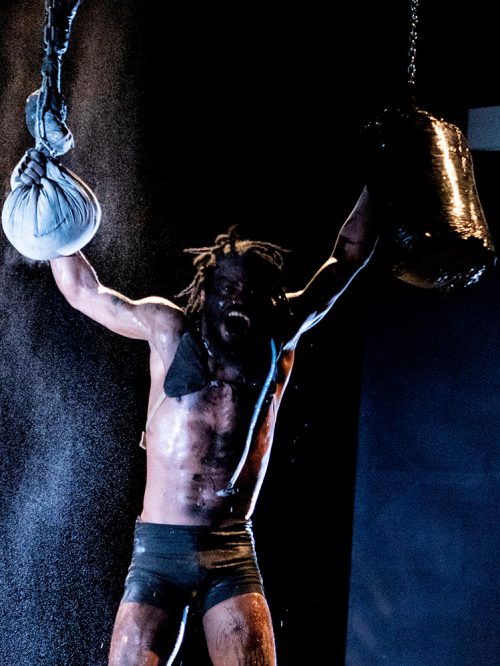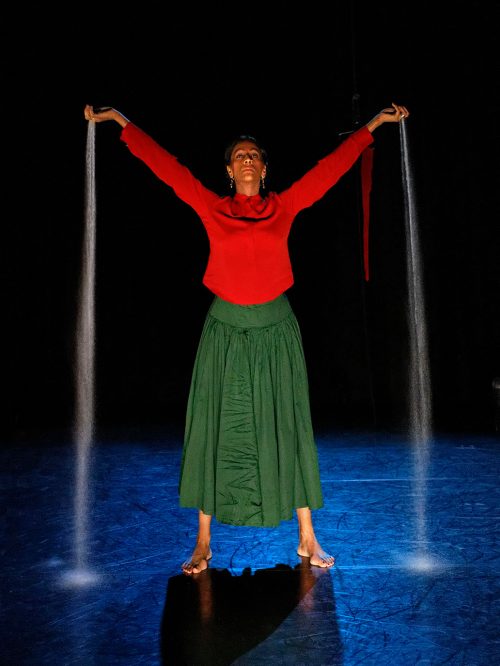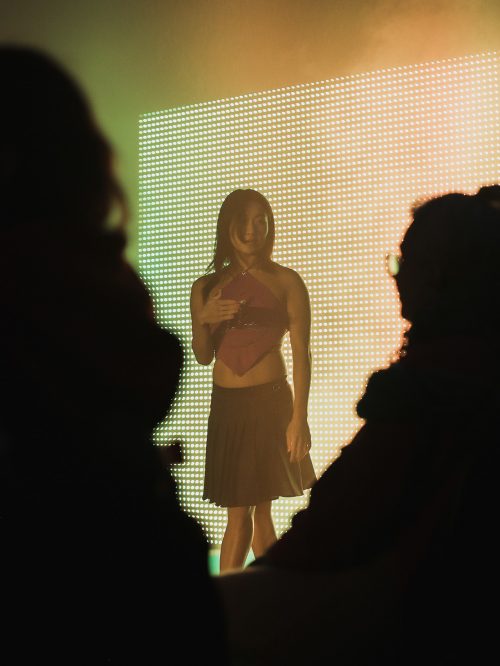Performance across Borders / Performed differences / Performed realities?
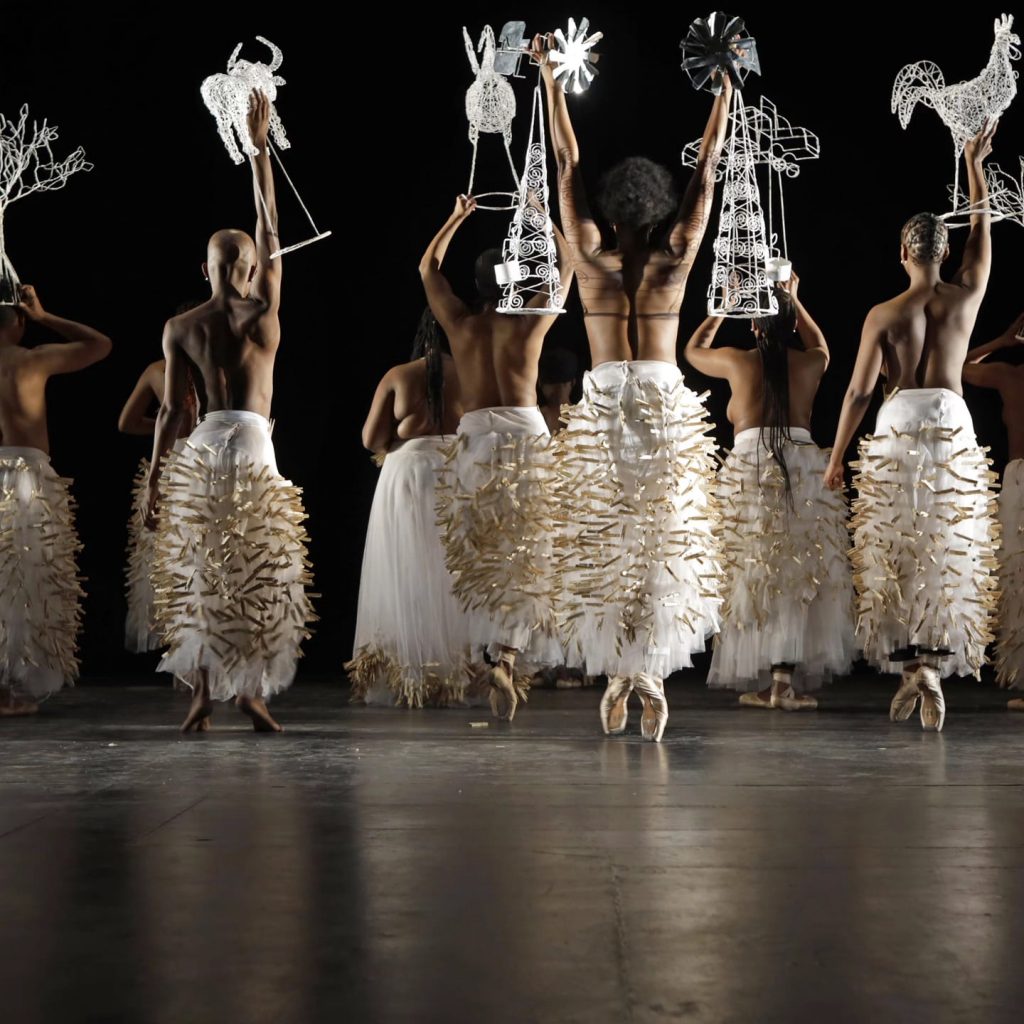
This is a personal reflection on 3 performances by choreographers I admire, namely Mamela Nyamza, Hannah Ma and Anne Terese de Keersmaeker. I delve into my experience as audience member and performer both in Europe and in South Africa, my home country.
It was in 2018 when I had the privilege of watching one of my favourite international choreographers works performed at Internationaal Theatre Amsterdam (ITA) as a parting gift from my host father. I had spent almost 3 months in the Netherlands working in his restaurant and in that time, he had learnt that Anne Terese de Keersmaeker was a favourite of mine. He got us tickets to watch her choreography in a triple bill entitled Trois Grandes Fugues alongside the choreography of Maguy Marin and Lucinda Childs to the music of Ludwig van Beethoven.
With great excitement, I knocked off early that Wednesday afternoon, got dressed up and caught two trains from Culembourg to Amsterdam. ITA is one of those fancy theatres that are markers of all great cultural centers in Europe. It seemed perfect for my first experience watching a dance legend’s work – the outing was a dream come true. The excitement of being able to brag to my dance friends back home that I had seen her work far outweighed the pleasure of the performance, however. I wondered to myself why I had been more moved by watching her various works on very grainy VHS tapes almost two decades prior more thrilling than sitting in the actual theatre watching live bodies. I began to reflect on what makes performance rich. What is it about the liveness that should capture us and what makes something really good.
It is well known that Europe has a long, rich history of training in all its classic artforms with conservatoires for specialized training which are rare in South Africa. The 8 bodies performing that evening in 2018 all boasted trim and agile physiques that we have come to expect of “well-trained” dancers. It was evident this training was embedded in years of ballet as their technical skill and timing were impeccable. Although exceptionally skilled the dancers felt and appeared very homogenous and quite detached. I had expected a more visceral reaction to the choreography of de Keersmaeker and even though a review described “the brilliance of the performers and the choreographer [was] to foreground the logic of the music with forensically thrilling clarity, even in the boisterous visceral clamour of the dancing” (Mackrell, 2017). For me it almost felt robotic and lacked emotive expression. I had expected a dance performance that would pull me out of my seat with sheer emotion, but I was left wanting and my first impulse raised a question that I continue to ponder. I wondered what that choreography might look like on South African/non-European dancers with less ballet history.
In 2022 I had the opportunity to work with hannahmadance company for INVASION(S). The company, made up of dancers from Syria, Brazil, Italy, Egypt, Germany, Luxembourg and Japan, had been researching INVASION(S) when I was invited to initially observe and perhaps offer some writing as my personal dance practice and academic focus was on improvisation as a way of unlearning to find my unconditioned physical voice. After a few days with the company Hannah Ma asked if I would be interested in performing. The process of creation and rehearsal was familiar to me as Ma worked similarly to South African choreographers I knew. Encouraging dancers’ participation by adding each of our voices to the textures of the performance scenes, her process reminded me of the very first dance company I worked with whose practice centered around the notion of physical intelligence, where the bodies were expected to have an active mind and body capable of intelligently responding in the creation and performance.
INVASION(S), which was collaboratively built uses the performers personal experiences of invasion and weaves them with the poetic text of Nora Amin and sound installation by Sebastian M. Purfürst. The text is layered with quotes from the performers projected onto stage walls and voice over by Nora Amin weaves a story that “confronts issues related to identity, lineage, and history, emphasising the relationship to the feeling of disconnection and exploring the interconnected residues we carry.” (Gresse, 2023).
INVASION(EN) work-in-progress showed as performance installation at the Kunsthalle Trier and at Trois C-L, Choreographic Center Luxembourg before its South African premiere at JOMBA! Contemporary Dance Experience (Durban) and JOMBA! at the Market Theatre (Johannesburg)in 2023. The international premiere was at Théâtre National du Luxembourg in June 2024. As a performer, in Europe, I was hyper aware of how my body reads on stage as the only black person. That is until fellow colleague Jabu Siphika joined the company for the premieres. Our dance training, although spanning 3 decades, did not include intense ballet training like most dancers from the north. Rather, ballet classes were auxiliary to the contemporary and physical theatre training that we focused on as professionals. The relationship of how quality art is defined in the west is very different to our experiences of it in Southern African performing arts. Technique tends to be more supportive of personal style and strengths back home. No one is expected to look like someone else which differed from what I have perceived when watching performers in the west. The emphasis in the west being on uniformity and precision instead of the infinite possibilities of diversity. It was pleasing to read a volksfreund review that commented “[w]ith its different and refreshingly individual personalities, Hannah Ma’s international team embodies such diversity in powerful images.” (volksfreund, 2022)
There are multiple layers of subversion happening on stage. In the various versions which shifted the staging, we play with blurring the lines between who is watched and who is watching. At various points we sit at the edge of the stage and stare directly into the audience, invading the gaze of the watchers and at other times we circle them or get really close, invading their space. The discomfort of having house lights switched on for all to be on display places bodies that have historically been at the receiving end of the gaze and oppression in opposition. A distinct memory of the earlier showings where the audience was in the round was the aversion of the audience members’ eyes when I made eye contact.
Despite my nerves to perform INVASION(S) in Durban, my hometown, we were met with a roaring standing ovation which I have learnt means something very different in Europe. In South Africa, audiences may love your show and still not stand depending on what emotions were aroused and how they are processing what they have just seen. In Europe, I have yet to be at a performance that no one stands. I do not believe that this is a sign of the quality of the work on stage but rather feels like an expected act from the audience. The reception in Luxembourg was different and I believe my own anxieties of performing there also fed into how I related to the audience response.
A Luxembourg Times reviewer comments “It’s not often you see home grown choreography like Hannah Ma’s Invasion(s) in Luxembourg, where seats tend to only sell out for Tanztheater Wuppertal’s performances of Pina Bausch, or prestigious touring ballet companies” (Rao; 2024). This speaks volumes to the aesthetic appreciated in these spaces. She goes on to sing Ma’s praises in her ability to bring to the stage work that raises timely issues and challenges audiences to think about the things that are happening in the world, particularly those related to invasion of borders and boundaries both territorial and personal for marginalized communities.
Between 2023 and 2024 I watched Mamela Nyamza’s Hatched Ensemble as many as eight times across two continents. I saw it first in Makhanda at the South African National Arts Festival when it premiered, then in Durban and Johannesburg as part of JOMBA! where she had been named legacy artist for 2023, then again in Maputo at Biennale de la dans en Afrique hosted by Kinani Festival December 2023. In 2024 I caught the show and artist talk back at ITA.
Hatched Ensemble is based on Nyamza’s earliest solo titled Hatched which she performed for close to 2 decades. Hatched Ensemble features 10 ballet trained African dancers and 2 musicians who begin on stage in various moving poses of preparation, remind me of an Edgar Degas painting in slow motion. A review described the work as “more like a classical installation on stage,” (Modise, 2023) .
The repetition of Saint-Saëns’s The Swan at first lulls us into a comfort of familiarity as we watch ballerinas of all shapes and sizes put on their pointe shoes. The dying swan track never progresses past the specific movement and begins to sound like a stuck record that causes the audience to shift uncomfortably in their seats some throwing out an irritated giggle or audible throat clearings as the track repeats over and over again. When I watched it in Amsterdam the irritation reached a peak I had not witnessed in South Africa or Mozambique that made me smile and wonder how other European audiences were reacting on this tour.
The dancers are a diverse group of South Africans that would make the term rainbow nation proud. It is a beautiful sight of bare-chested queer black and brown bodies dressed only in romantic tutus that are adorned with clothes pegs. As each dancer rises onto pointe checking their balance and ensuring the snugness of their shoes, we hear how each body shapes the sounds of the pegs clinking together which starts to add a multilayered percussiveness to the very classical music. It takes the dancers about 20 mins to all eventually get up and in unison start to float across the stage holding wire art very distinct to South African roadside vendors and tourist curio shops. The same kind of wire art that is self-made and seen in the hands of Black children in townships also mimics the ballet corps that might wave a rose in the background. At this stage we have not seen the dancers beautifully painted faces, only stolen glimpses of breasts as Nyamza makes us watch the dancers backs and relishes in the protracted time it takes for the action to ensue. The track fades to reveal Litho Nqai’s beautiful operatic voice, still repeating the same movement of the dying swan as the dancers’ voices join her. As the light shifts on stage, we notice that Given “Azah” Mphago, an African multi-instrumentalist sits downstage in the corner with various percussion instruments. We hear a cowbell, an egg shaker, a mbira, and the landscape transforms in the imagination of our eyes. I see my country and the many stories of women and queer folk unfold. Stories of oppression written on bodies that were considered wrong but somehow find freedom and release.
It is evident that these dancers are skilled ballerinas, but this is not measured by their body types or sizes but rather the discipline it takes for them to shift seamlessly through a ballet that resolves in barefooted Southern African stamping and singing. Nyamza is smart in her choreographies, using what she knows will appeal to audiences both European and African. She gets her foot in the proverbial door by appealing to things that are familiar and expected, the singing and dancing of the half-naked Blacks woven into something that will resonate with what a white audience has come to expect and understand of us. What intrigues me most is how she undoes this understanding. How she unravels a thread of mistaken identities and identification. What I find surprising as an audience member who is also Black, watching my stories told on stage so eloquently, is how many white audiences still fail to hear or see us in the true intention of what we put on stage.
Mamela Nyamza’s Hatched Ensemble is as defiant and feisty as she is. She eloquently speaks of the struggles she has had to endure as a queer black dancing body in post-show talks and matter of factly pronounces that her work is speaking directly against this. “I wanted to show that anybody can dance, regardless of the production they want to be a part of,” (Nyamza in Gosa, 2023). She is not the only South African choreographer who tackles issues of gender, sexuality, coloniality and tradition through their choreography, as we’ve seen in internationally performing artists like Lorin Sookool and the late Dada Masilo.
To the 2024 Amsterdam premiere I had invited my host family from 2018. Only one of the 3 sisters was really taken by the work and contacted me a few weeks after the show to ask about the music in the second half where they gida barefooted. She had fallen in love with the melody and couldn’t get the song out of her head, wanted it on her playlist. I sent her a youtube link. The song titled Ngesab’ Igazi Lomuntu by Amatshitshi Amhlophe asks “how can I kill him if I am afraid of the blood of a person?”. A pertinent question in the violent times we are expected to be complicit in. In all venues I watched it the performance received standing ovations, the difference being how these ovations were performed by the audience in South Africa, often by singing back to the performers and reciting their clan names.
As part of our INVASION(S) offering in Luxembourg we wanted to share the performers process by providing some information displayed on a foyer wall. I wanted to contribute the declaration that artists from the global south had addressed to the Goethe Institut which questioned its complicity in the silencing and cancelling of certain artistic voices. The theatre did not allow us to do this. It was clear that they could not be seen to be critical of one of the big cultural funders despite the personal views of the performers on stage. With the never-ending invasions on marginalized bodies across the globe it intrigues me how we still cannot be honestly heard in our protest, whether on stage or in the streets. For me there continues to be an apathy and fear of art that does not toe the line or is overtly critical of the politics of the world. These fissures are seen at the points where the security of a minority is at the cost of the majority. And I find it hilarious that Nyamza’s Hatched Ensemble is receiving such profound international acclaim when she talks to these very issues, be it in a more subtle way. There seems to be a certain dishonesty amongst us as we play the performer-audience line.
Although audiences may be small in South Africa for contemporary dance their engagement is more honest and authentic, with active responses during and after the show. The questions that arise from the talk backs or engagements with artists are rich and unpack tough realities. There is often an appreciation for the artists who are brave enough to tackle the deeper issues head on. In Europe I have found that there is a greater appeal to the abstract. That an analysis and investigation of sounds or movement to create abstracted art seems to be appreciated more than the confronting narrative-based choreographies. Perhaps a sign of the times?
Bio
Thobile Maphanga is a South African dance practitioner, scholar/writer, and creative collaborator passionate about her continent and finding holistic solutions to resolving issues of well-being and full living through the arts. She holds a B.Comm: Information Systems and Drama, B.A Honours in Drama and Performance Studies and is an alumni of the Festival Academy. She works as project manager, assistant curator and editorial steering committee member for JOMBA! Contemporary Dance Experience and it’s Masihambisane Dialogues. She is a dramaturg and creative collaborator for Hannah Ma Dance Company, and a mentor and facilitator for the Festival Academy.




